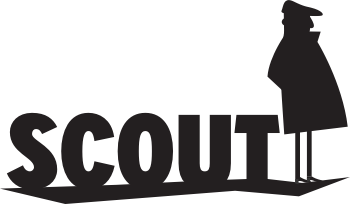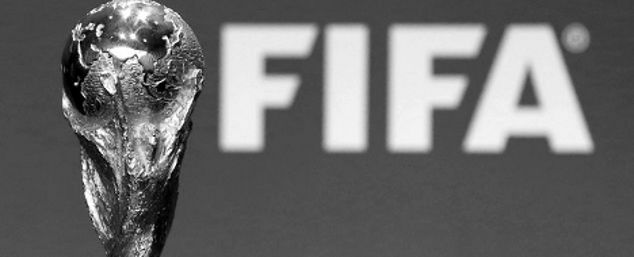After weeks of deliberating and a couple of false starts, the official FIFA McDonald’s game was rolled out a couple of days ago. A popular choice amongst Fantasy managers for the previous World Cup and Euro 2012, you can find an excellent overview of the basics provided by Bonz in his recent community submission:
With those principles covered, we’ll spend some time in this guide to try and shed some light on the more contentious issues surrounding the rules, suggesting how this might shape the final tweaks in our selection strategy.
The Ruleset
Not for the first time with a Fantasy game based on an international tournament – confusion reigns. While FIFA have revisited their rules laid out when the game initially launched, tweaking the scoring for “Balls Recovered” and adding further detail to how transfers work, in both cases we’re still lacking clarity.
Team Selection
Thankfully, the biggest area of confusion has been ironed out. FIFA have now confirmed that players who have already featured can be swapped during the current round for any relevant player in a squad who has not yet taken to the pitch – essentially, players in a starting XI are not locked in, with the “stick or twist” feature now in play. FIFA has also confirmed that you can change captain as long as your new captain has not already played.
You can change every player in your line-up that has already played during the current round for any other relevant player in your squad that hasn’t already played. You can also change the captain as long as the new captain hasn’t already started to play. For example if you have placed NEYMAR on Your Pitch and he did not perform as well as you expected after the first match you can replace him with a forward from your bench that hasn’t already played during the current round. You would lose the points from NEYMAR for the round but the new player might get more points.
Scoring Points – The Recovered Ball Puzzle
We now move to how our squad actually scores points and an area of considerable confusion. FIFA’s game, as we’ve seen in the past, includes statistics such as “Balls Recovered” and “Balls Delivered into the Penalty Area” within their scoring matrix. Neither is defined in the rules.
We’ve contacted FIFA for clarification but, as it stands, remain in the dark as to how both these scoring methods are defined.
We have some familiarity with “Recovered Balls” or “Recoveries” courtesy of other games such as the Champions League affair and via OPTA’s data definition. The latter states the following:
“This is where a player wins back the ball when it has gone loose or where the ball has been played directly to him.”
This definition created the following top ten players for Recoveries from last season’s Premier League season.
| Player | Team | Minutes Played | Recoveries | Mins/Per Recovery |
| Cameron | STO | 3471 | 209 | 16.61 |
| Ward (Joel) | CPL | 3419 | 199 | 17.18 |
| Coleman | EVE | 3402 | 187 | 18.19 |
| Koscielny | ARS | 2874 | 176 | 16.33 |
| Shaw | SOT | 3147 | 175 | 17.98 |
| Ivanovic | CHE | 3359 | 168 | 19.99 |
| Skrtel | LIV | 3391 | 165 | 20.55 |
| Fonte | SOT | 3360 | 164 | 20.49 |
| Sagna | ARS | 3221 | 163 | 19.76 |
| Lovren | SOT | 2940 | 161 | 18.26 |
However, when we compare this to data from the last World Cup Fantasy game in 2010 (credit to Billy Gilmore’s recent Hot Topic), there’s every indication that the OPTA definition is not the one likely to be used in the FIFA game. Here’s a table listing the top players from that World Cup, ranked by minutes per “Recovered Ball”.
| Player | Country | Appearances | Minutes Played | RB per game | Mins per RB |
| Coentrao | Portugal | 4 | 360 | 3.33 | 27.00 |
| Bougherra | Algeria | 3 | 270 | 2.67 | 33.75 |
| Chavez | Honduras | 3 | 270 | 2.33 | 38.57 |
| Izaguirre | Honduras | 2 | 180 | 2.00 | 39.00 |
| Pantsil | South Africa | 5 | 510 | 2.00 | 45.00 |
| Grichting | Switzerland | 3 | 270 | 2.00 | 45.00 |
| Onyewu | USA | 2 | 170 | 1.67 | 54.00 |
| R Costa | Portugal | 2 | 179 | 1.60 | 56.25 |
| Demel | Ivory Coast | 2 | 180 | 1.57 | 60.00 |
| Shittu | Nigeria | 3 | 270 | 1.50 | 60.00 |
In all cases, the minutes per Recovery, or “Recovered Balls” were far greater in the FIFA data – suggesting that this method of scoring may not be as significant as we imagine. Indeed, with all players now having to earn two recovered balls to score a single point, we should, perhaps, show caution here.
Having said that, we have to presume that FIFA have done some modeling and that this has influenced their player pricing. Certainly it appears that defensive stats – either Recovered Balls or Blocks, have played some part in how they have produced their pricing.
Notably players like Omar Gonzalez and Geoff Cameron both of USA (5.0), are relatively high priced, presumably because, in their case, Recovered Balls and Blocks are expected to be a factor. As we see above, Cameron ranked very highly for recovered balls in the Premier League last season, while Gonzalez, a formidable, towering figure in the American defence, is presumably consider a likely consistent barrier for shots on goal.
The lack of a clear definition makes the effectiveness of Recovered Balls a mystery to us. The player pricing in the game pushes us towards cheap defenders from unfancied sides, in hope that Recovered Balls and Blocks can subsidise the inevitable lack of clean sheets. Right now, it’s not known if this strategy will pay off but, giving the aggressive price list – we’ve little option but to adopt this approach, at least to some extent.
Interestingly, Gary Medel of Chile, a player who normally plies his trade in midfield, is priced at 6.5 in the game, making him by far the most expensive Chilean defender. Presumably because FIFA have based this price on his performances in the Premier League where he made 206 Recoveries and 12 Blocks. He’s likely to be deployed at centre-back for his nation in the tournament: it’s hard to say whether that will enable him to justify his price tag.
We can further speculate on Phillip Lahm and Cesar Azpilicueta. Both are defined as midfielders in the FIFA game but are set to be deployed at full-back. Again, it’s unclear whether this misclassification will help their cause. It should be noted that, as of this evening, FIFA changed their rules meaning that midfielders now need to earn two recovered balls, rather than the original one, to earn a point.
Delivered Balls
Scoring from attacking actions is no better defined. The game states that all players earn a point for every two balls delivered into the penalty area. Again, there’s no clear definition of this but we have to presume that this includes crosses from wide positions and passes into the box. Similarly, we have to presume that, in both cases, these have to be successful, eg: they have to find team-mates. Finally, we can presume that dead-ball deliveries count.
In all cases we’re speculating and making assumptions because there is no clear definition. Again though, we have to accept that FIFA have modeled this scoring and that this has influence the player price list. Certainly, with Andres Iniesta valued at 8.5 – the top priced midfielder – there’s a suggestion that completed passes into the opposing box will be a strong factor.
Once more, the aggressive pricing has forced our hand to some degree when it comes to our midfield choice. We are drawn towards a proportion of cheaper, defensively-minded midfield options from the lesser sides – hoping that Recovered Balls and Blocks play their part. However, set-piece delivery, crosses and completed passes in the attacking third also have to be considered. This could make a player like Steven Gerrard, an individual who ticks both defensive and attacking boxes, a key figure. A price of 7.5 would certainly suggest that FIFA expect him to score strongly.
With set-pieces a likely factor, you should know that we’ve recently updated our set-piece table to list those players who are likely to be on dead-ball delivery for their respective sides.
In conclusion, the McDonald’s backed FIFA game has already proved a frustrating affair that lacks clarity and has us Fantasy Managers embarking on the tournament with so many unanswered questions. We’ve fired this issues to FIFA in hope we’ll get some clarity and, if it arrives, we’ll be sure to update you before Thursday’s deadline. For now though, the official game remains as clear as Ronald McDonald’s conscience. A real shame.
The Fantasy Football Scout League
Despite the issues, the official FIFA game remains a popular pursuit around these parts. We’ve set up an official FFS league which you can join by clicking this link.
*Edit*
Please note that this article was edited from the first draft after FIFA updated their rules on Wednesday evening, just 24-hours before deadline. As mentioned in the article, according to the new edited published rules, midfielders now need to earn two recovered balls rather than one, to earn a point.



10 years, 5 months agoWell so much for the players being priced according to expected returns...they're still writing the effing rules! Sod this, start again - autocomplete.